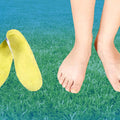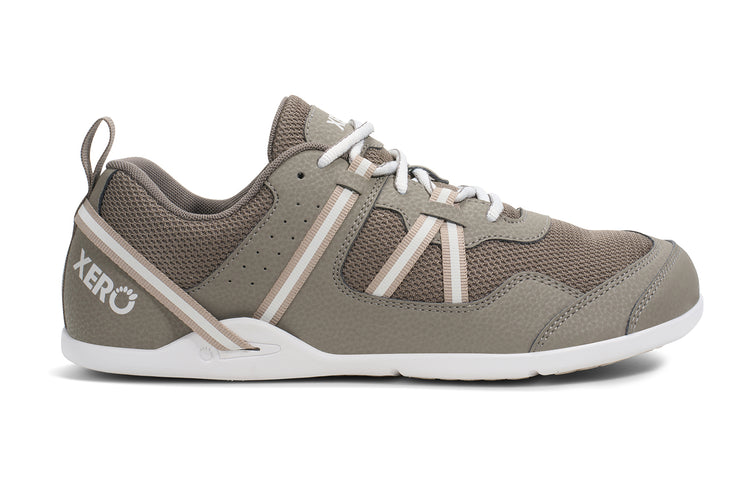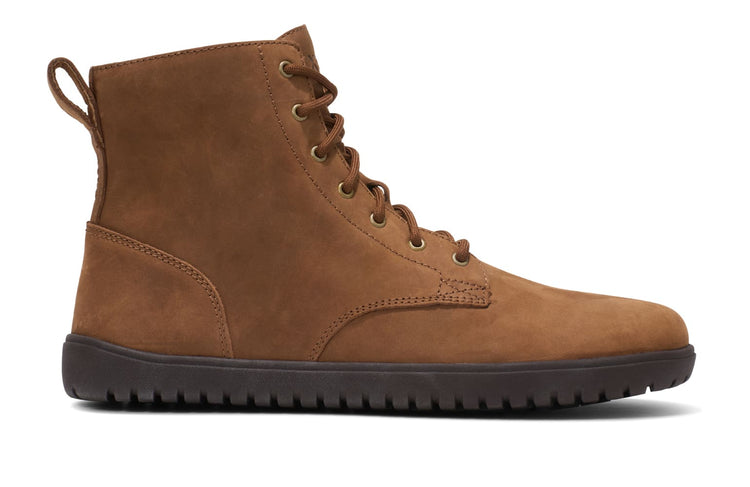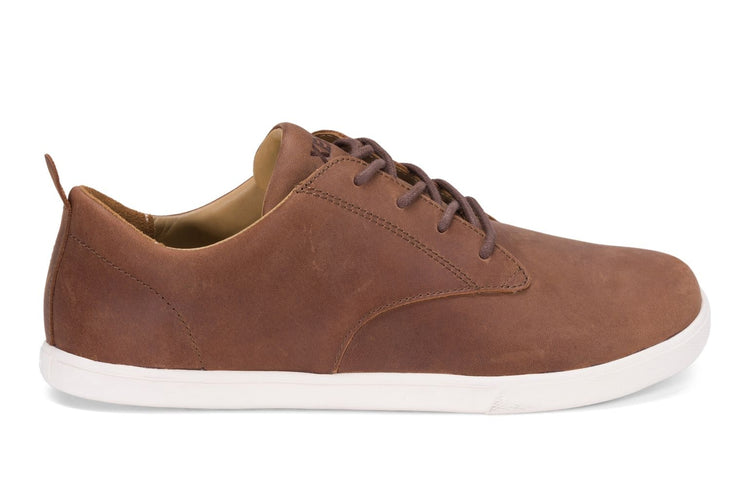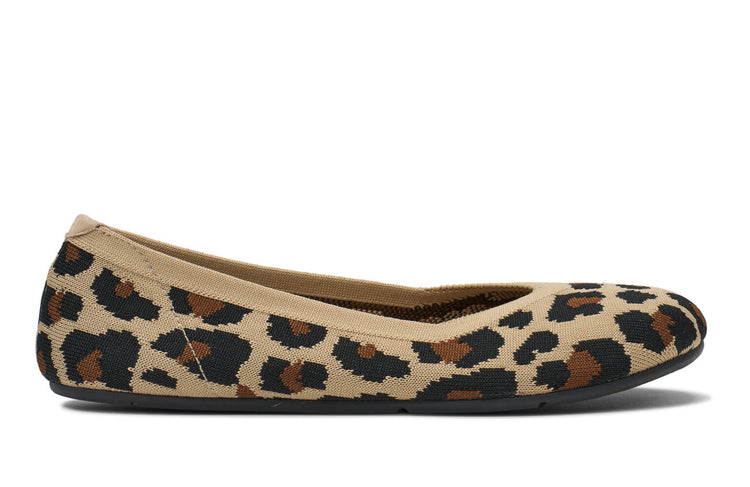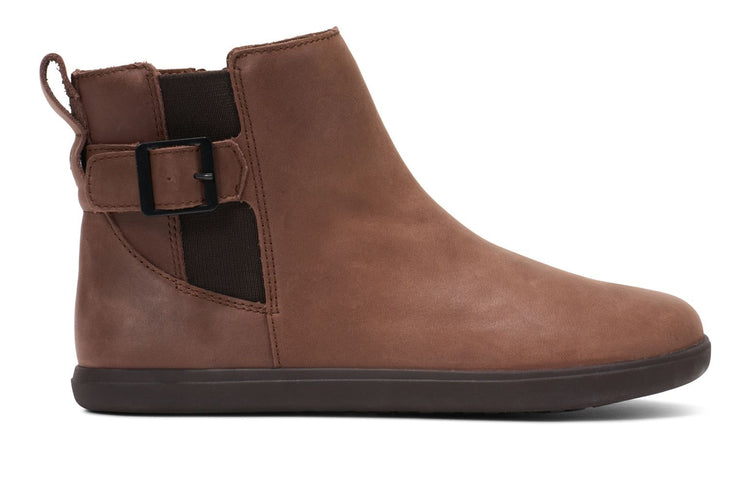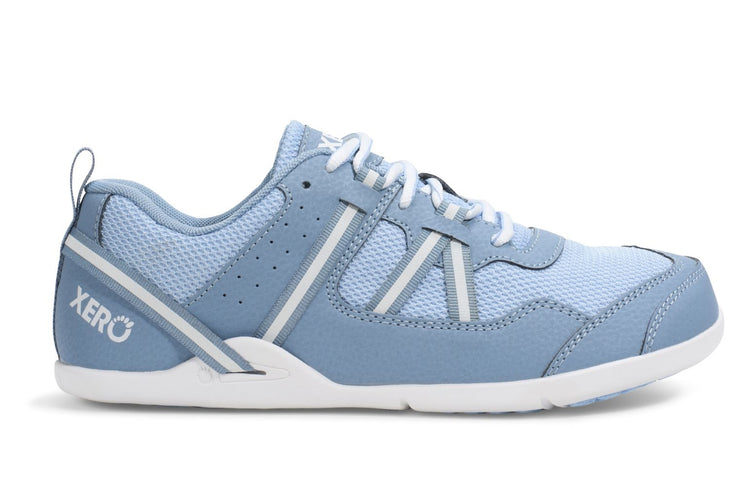latest News
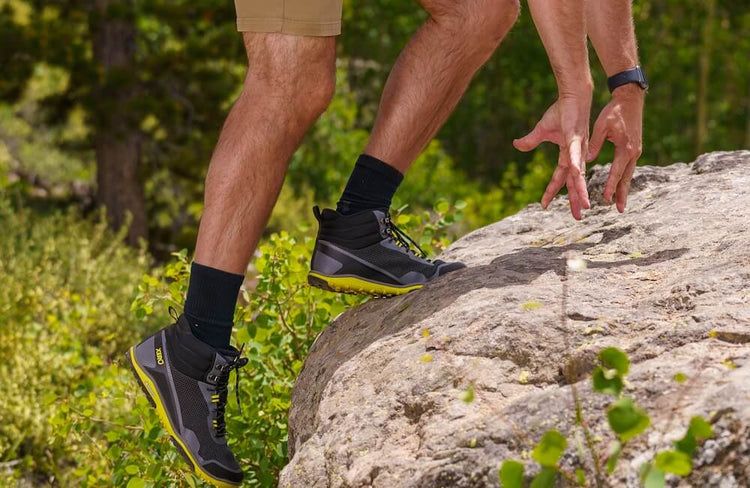
Best Shoes for Wide Feet
If you have wide feet, finding shoes can prove to be a challenging task. Many traditional shoes have a narrow structure, especially through the midfoot and toe box. As a result, people with wider feet struggle to find something comfortable. The discomfort of poor-fitting shoes can lead to many issues over time, some of which can be serious. While many shoe brands offer wide sizing options, it’s often not enough to provide comfort, and many will find their toes are still pinched. Minimalist-style shoes may be a better, more comfortable choice for people with wide feet. Keep reading to learn why barefoot shoes and minimalist footwear may be the most comfortable shoes for wide feet. You’ll also see how finding a comfortable, properly fitting shoe could protect your feet from some of the long-term issues that may occur when you regularly wear shoes that are too tight or that pinch. When You Wear Shoes That Don’t Fit Your Wide Feet Too often, people with wide feet have a hard time finding shoes that fit. That can lead to wearing shoes that are too tight or narrow, despite searching for comfortable shoes and trying several different options. Even wearing footwear with a wide shoe size, you may still find your toes and feet feel crammed into the shoe. People who wear shoes that are too tight or fit poorly may experience long-term issues, including: Bunions: These bone deformities are painful and happen over time when there is pressure consistently put on the big toe pushing it up against other toes. One cause of bunions may be wearing shoes that have a narrow toe box. Corns and Calluses: Thickened skin can form in areas with pressure or friction. Blisters: Continuous rubbing creates these, and when you’re standing or walking in a shoe that rubs an existing blister, the pain can get unbearable. Hammer Toe: This deformity occurs when a toe becomes bent at its middle joint. One cause of hammer toe is shoes that don’t fit properly. Neurological Damage: Nerve compression can result in Morton's neuroma and other conditions. Pain and Postural Issues: Postural issues and pain can result from back, hip, and knee problems. Needless to say, these issues can impact your overall well-being and affect your balance, mobility, and posture. So what kind of shoes can help people with wide feet avoid these problems? If you find that the wide version of brands selling conventional or “normal” shoes don’t fit, it may be time to seek another option. Barefoot shoes are designed around a foot’s anatomy, including how your foot bends and flexes naturally as you move. As part of that design, you’ll find that these shoes have a wider, foot-shaped toe box that may be better at accommodating your wide feet. Comparing Traditional Shoes With Barefoot Shoes How are barefoot shoes different from conventional footwear? There are several key differences. For those with wide feet, these differences may be just what you need for the right fit. Conventional footwear typically has a raised heel, narrow toe box, and rigid sole. These features constrict natural foot spread and movement for anyone, but especially for anyone with wide feet. Barefoot shoes are different and offer multiple benefits for wide-footed people: A wider, foot-shaped toe box allows your toes to spread out naturally and doesn’t put pressure on your toes. Zero-drop-sole construction keeps the forefoot and heel at an even level against the ground, for natural gait and spinal alignment Flexible materials let the foot move and bend without restriction The minimalist design avoids unnatural support, letting foot muscles work and get stronger These features accommodate wide feet, providing comfort and flexibility without pinching your toes. Barefoot Shoes Provide Comfort for Those With Wider Feet If you've struggled to find comfortable shoes for wide feet, then barefoot shoes might be the answer. For anyone who stands, runs, or walks for long periods of time, barefoot shoes give their feet functional freedom. The zero-drop design, wide toe box, and minimalist structure let your feet move naturally. The enhanced flexibility and natural positioning allow you to enjoy your posture and full balance, so every step you take can feel more comfortable and stable. Xero Shoes: Made For Wide Feet Xero Shoes are designed for how human feet are shaped. They’re wide enough to let your toes spread and splay, and flexible enough to allow you to move freely and naturally. The good news is that we have all types of minimalist-style footwear for any activity, fitness level, or lifestyle–perfect for men and women with wide feet. We have shoes for running, walking, hiking, and just hanging out. We even have waterproof shoes and boots… all designed to comfortably fit your feet. In fact, here are a few publications that agree: Field & Stream features the Xero Shoes Scrambler Mid as the best hiking shoe for wide feet. MindBodyGreen recommends the best minimalist running shoe for wide feet is Xero Shoes' Prio. And our customers seem to agree with these publications! “I have extra wide feet and shoes always pushed my baby toes under so I was walking on them. So I figured I had nothing to lose by trying these. I am so thankful I did! I will never buy any other shoe again. Xero shoes are my hero!” “I’ve always had trouble finding shoes that fit my wide feet and these are just so comfy. I’ve tried other foot-shaped shoes but they were not as normal looking as these which go with everything. I should have gotten a half size down from my usual sneaker size but I switched to a thicker insole and it works.” No matter what type of shoe you’re looking for, our barefoot-style shoes are made to fit wide feet. Explore our selection of shoes to find one for any activity or lifestyle. Men’s Barefoot Shoes | Women’s Barefoot Shoes The content of this post does not constitute and is not intended to be a substitute for professional medical advice, diagnosis or treatment. Always seek the advice of a physician or other qualified health provider with any questions or concerns you may have about your health or a medical condition.
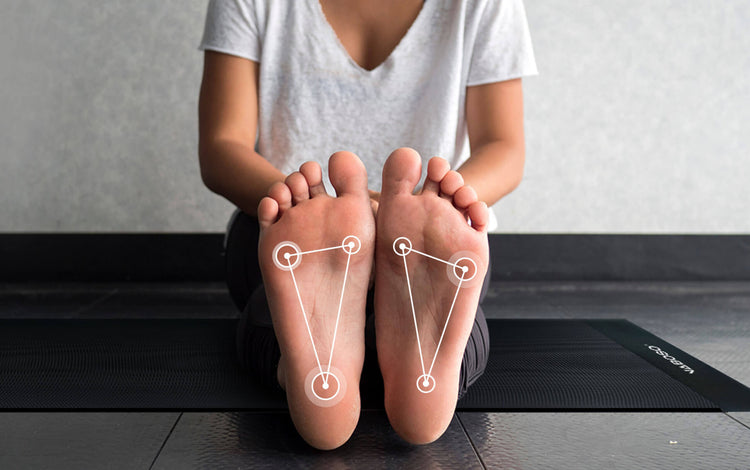
Foot Recovery Tips from a Functional Podiatrist
Dr Emily Splichal - Xero Shoes Partner Our feet carry us through life, supporting our weight and keeping us on the move. They carry us through our day to day, but we often don’t appreciate them until they start to ache or become injured. Research suggests that up to 87% of people will experience foot pain at some point in their lives. This number is so high not only due to the amount of repetitive stress our feet encounter on a daily basis. From overly supportive shoes to a gradual weakening of the foot with age, we need to be proactive in our foot health to prevent this high risk of foot injury. As a functional podiatrist, I strongly believe in the power of daily foot recovery, foot strengthening exercises and smart footwear choices to offset daily repetitive foot stress and to make a lasting impact on foot health and movement longevity. In this blog, we will explore an example of a daily routine to help you take steps towards improved foot health. Morning As you wake up each morning, this is the perfect time to also wake up your feet and align your foot posture, allowing you to better react and respond to each step throughout the day. First, start each day by releasing your feet for just a couple minutes with the Naboso Neuro Ball. This innovative product is unlike any foot release tool in that it is not only a ball but it also splits open to make two domes. In addition, both domes are covered with a patented texture which uniquely stimulates the nerves in the bottom of the feet. To begin, follow this simple 5 point foot release where you stand on specific points on the bottom of your foot for 30 seconds - allowing for pin point acupressure stimulation along the muscles of the feet. After releasing the feet, I like to go directly into an exercise called forward lean. This is a foot posture activation exercise that takes less than 30 seconds to do. Start by standing with the feet shoulder width apart and find the foot tripod under the 1st metatarsal head, 5th metatarsal head and heel. Lift the toes, spread that out as wide as you can, then place them back down onto the floor. Slightly lift the arch of the foot by rotating externally in the hips. Now that your base is stable, stand tall with your arms by your side. Imagine you are stiff as a board. Staying stiff as a board, slightly lean the body forward until you feel the toes push down into the ground. Return to the starting position and relax the feet. Repeat 5 times to sufficiently wake up the foot muscles for your day. During the Day In an ideal world, work would do itself and we would be able to just live our lives as our feet take care of themselves. While this isn’t fully possible, there are tools that make it almost that easy! Stay connected to your feet with no effort at all by wearing minimal footwear and sensory-stimulating insoles or socks. Evidence suggests that our foot muscles respond to sensory stimulation, so by reducing cushion in our shoes it could help strengthen our feet and support our body alignment. A combination of Xero Shoes plus the Naboso Activation insoles creates an environment of maximum sensory stimulation and therefore could help support overall foot health. Evening At the end of a long day, we all just want to kick our feet up and relax. However, just taking pressure off of our feet may not be enough to fully recover the 26 muscles in the bottom of our feet. A great way to passively restore your foot shape and stretch your toes is toe spacers. Toe spacers such as Splay by Naboso, gently realign the toes to their natural position, improving foot function and minimizing arch pain. Whether you want to wear toe spacers while relaxing on the couch or walking around your home, toe spacers are fast becoming one of the fastest-growing foot recovery trends as featured in a recent Wall Street Journal article. To learn more, you can watch a recent lecture I gave about the science of toe spacers. Conclusion There are many options available to help boost your foot recovery and offset foot pain. Remember, the more consistent you can be in your daily foot habits the better the results you will see! By starting with these tools and exercises, you’ll be fast on your way to the results you want. About the Author/Bio: Dr Emily Splichal, Functional Podiatrist and Human Movement Specialist, is the Founder of EBFA Global, Author of Barefoot Strong and CEO/Founder of Naboso Technology. With over 23 years in the fitness industry, Dr Splichal has dedicated her medical career towards studying postural alignment and human movement as it relates to barefoot science, foot to core integration and sensory integration.
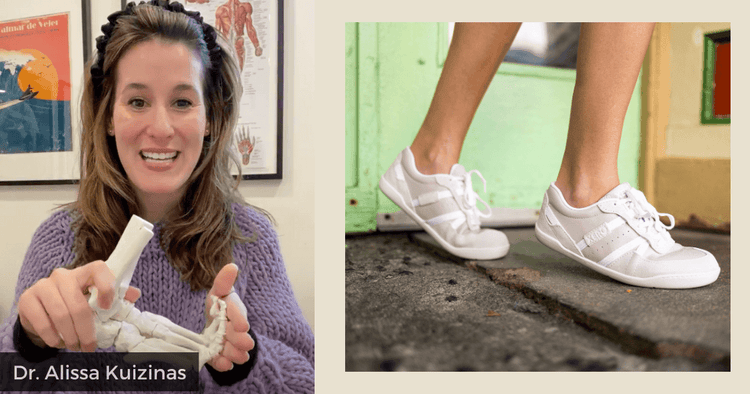
A Podiatrist Explains How Shoes Impact Your Foot Health
Massachusetts-based podiatrist Dr. Alissa Kuizinas (and Xero Shoes Partner) has more than a medical perspective on footwear. She struggled with foot discomfort for years. With each step she took, her big toe would jam against the inside of her shoes – “even with my ‘good shoes’ on,” she recalls. The $133 billion shoe industry has footwear specialized for every situation. Workout shoes. Hiking boots. Running shoes. Even walking shoes. And the solution to foot problems? The typical suggestion is more cushion, more support, and a more rigid structure to immobilize your foot. But is that the right approach to shoes? Your Foot Issues Might Be a Shoe Problem “Traditional medicine would recommend that I wear custom orthotics, limit my activity and wear stiff-soled shoes until the pain becomes bad enough to require surgery,” Dr. Kuizinas says. “I knew there had to be a better solution.” The deeper this foot doctor delved, the more she found that her feet weren’t the problem. It was her shoes! “Even though shoe companies spend millions of dollars on technology and design development, the shoes they produce and sell are doing a major disservice to human feet,” she explains. “From cushioning to heel-toe drops, stiff soles to narrow toe boxes, nearly every aspect of a modern shoe has a negative impact on foot movement. It leads to an epidemic of dysfunctional, weak, and malfunctioning feet. And most of us aren’t even aware this is happening!” Get Out of the Way of Your Feet “The primary purpose of shoes is to protect our feet from the elements and from different surfaces,” Dr. Kuizinas says. “They’re for when we are out in the world walking on a slippery or wet surface. Ultimately, shoes are really there JUST for that purpose. They don’t need to be bulky and restrictive, or supporting our feet. Our feet are designed to support themselves!” Think of any muscle in your body. If you use it, work it, and challenge it, what happens? It gets stronger. And if you don’t use it, or even worse, immobilize it, it gets weaker. The same is true of the muscles in your feet. Your Feet Are Made to Be Strong Your feet are made to support the entire weight of your body. They’re meant to be strong. For them to maintain that strength, they need to work. And that means your shoes shouldn’t be doing their work for them. So… why not just walk barefoot all the time? Research supports the idea of slight “protection” being beneficial. A study comparing outdoor barefoot walking with minimalist footwear found that the shoes improved walking form in both younger and older adults, and reduced risk of falling. Dr. Kuizinas recommends a ‘as little shoe as possible’ approach to footwear, putting the focus on building resilient, capable feet.“Rather than building up the shoe to try to externally support the foot and limit motion, minimalist shoes get out of the way of our feet,” she says. “They allow feet to function naturally, to move and bend. The transition to minimalist shoes involves stripping down the unnecessary and harmful components of modern shoes so that feet can be feet again!” When working with clients today, Dr. Kuizinas shies away from the term “minimalist shoes.” Instead, she likes to talk about “functional shoes” or “natural shoes.” “Natural footwear is really on the leading edge of shoe technology,” she says. “By stripping away the unnecessary and downright harmful features of shoes, we allow feet to function effortlessly as they were designed to!” And when we do that, we give our feet the chance to grow strong and capable... the core of good foot health. How to Find a “Functional” Shoe that Supports Good Foot Health Dr. Kuizinas has a three-point checklist of what she looks for in a functional shoe, which not-so-coincidentally match up with the three major functions of the human foot during walking. “The foot has three jobs: to be a ‘mobile adaptor’ or shock absorber when it first hits the ground, to be a rigid lever during push-off, and to be a sensor of the environment,” she explains. “As long as it can do these three things, it will function well.”Here’s how she says those functions should be reflected in the shoes you wear: Wide Toe Box: “Functional sneakers should have a wide, foot-shaped toe box. They’re broad enough to allow our big toe to sit in a proper alignment.” Flat & Flexible Soles: “Our feet contain 26 bones and 33 joints. And joints are designed to move! A flexible sole allows for natural foot movement. By contrast, stiff and rigid shoes with elevated heels prevent the joints from fully moving through their range of motion and limit the foot.” Minimal cushion and support: “A functional shoe should be only as cushioned as you really need. Overly cushioned shoes dampen your perception of what’s going on with your feet, and your ability to walk well.” If you follow these simple standards, you’ll find shoes that support your foot health by not doing so much to support your feet! Be Patient and Build Up to Barefoot Both from her personal experience and in her professional practice, Dr. Kuizinas recommends being patient when it comes to transitioning to full-time “functional” footwear. In the early days, she recommended a one-two approach of wearing functional shoes primarily for low-impact activities like walking and running errands, while also going barefoot around the house to help build resilience in the feet and ankles. “As your foot function improves, you’ll be able to tolerate less arch supportive shoes for greater amounts of time,” she explains.In not too much time, you’ll find yourself able to enjoy walking, running, hiking, and anything else you love to do more... because you’ll feel steadier and more stable on your feet. Click Here to Find the Best Barefoot Shoe For You.
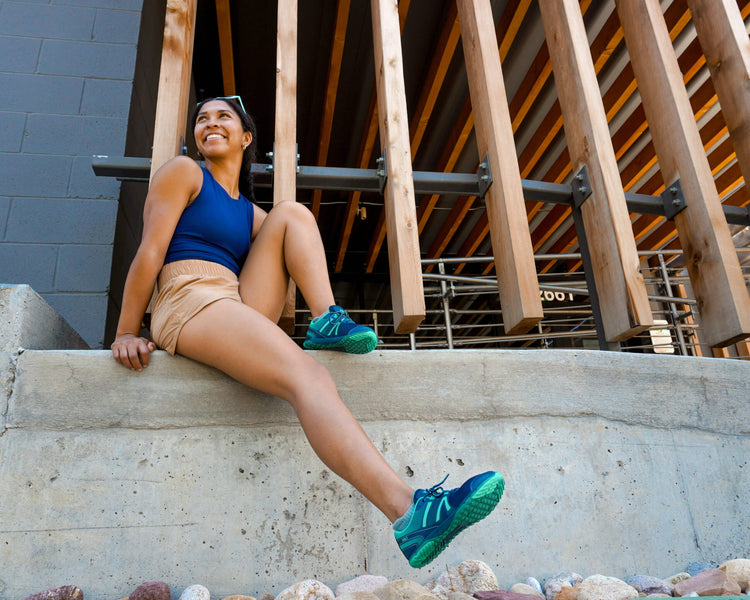
Are Barefoot Shoes Beneficial for Active Recovery?
In the past few years, “recovery” has become a buzzword, as the need to take care of our well-being is paramount, whether you're an athlete, a parent, an executive, or simply someone who appreciates comfort. Any product or service that helps us cope with daily stressors is now considered a form of “recovery.” We often underestimate the importance of allowing our feet the time and space to recover. However, Google “recovery shoes,” and you’ll find lists of highly cushioned shoes and sandals, some made almost entirely of foam. But what if there’s a better way to recover? In this blog, we’ll explore the importance of foot recovery and how Xero Shoes can be a tool for recovery. Why Are Barefoot Shoes Good for Recovery? Our feet bear the brunt of our daily activities, yet they are often the most neglected part of our body. With 26 bones in each foot and more than 200,000 nerve endings, it’s time we optimize our feet for recovery. Traditional shoes can restrict natural foot mechanics, like impeding your feet' natural flexion and extension. The shoes themselves can also have a narrower fit that feels tighter on your feet. Xero Shoes are designed to facilitate natural movement, providing your feet with the freedom they crave. Traditional shoes can impede your feet' natural flexion and extension, hindering recovery. With Xero Shoes, you'll experience a liberating sensation that encourages a more natural gait, promoting better blood circulation and aiding recovery. A Podiatrist Recommends Barefoot Recovery Shoes Dr. Alissa Kuizinas, DPM, is a podiatrist passionate about natural foot function. Here’s what she says about the benefits of wearing barefoot shoes. “Going barefoot allows your feet to feel and interact with the ground surface, allowing for improved muscle reactivity and postural changes, along with adaptation of the foot muscles and strengthening.” The foot-shaped design of barefoot shoes also aid in active recovery, allowing your feet to activate while still feeling comfortable. Dr. Kuizinas agrees, “Since the shape of the shoe accommodates the toes and the natural splay and expansion that occurs with walking, they often allow for better shock absorption and better use of the muscles of the feet and legs. They prevent the compression and restriction to the front of the foot that occurs with traditional shoes.” What to look for in recovery shoes: Natural Comfort – A barefoot shoe design encourages a more natural gait, reducing the impact on joints and muscles. This can be especially beneficial for recovery after intense workouts or long periods of standing. Lightweight and Flexible Design – A pair of recovery shoes should not feel constricting on your feet. Look for shoes with a roomy toe box that lets you wiggle your toes or scrunch your feet. The feather-light feel and flexible design of Xero Shoes make you feel barefoot. The best sensation is when you forget you’re wearing your recovery shoes. Breathability – Just as you want your feet to relax, you also want to ensure they’re getting proper airflow. Look for shoes constructed with breathable materials, like mesh, hemp, or cotton, that ensure your feet stay cool and dry. Breathable shoes benefit post-exercise recovery, preventing moisture buildup and potential discomfort. Versatility – Recovery doesn't mean compromising on style. Whether relaxing at home, weightlifting at the gym, or running errands, you can do so in style while prioritizing your foot health. A good pair of recovery shoes or sandals don’t have to look like they’re for recovery. A bonus: any pair of Xero Shoes is designed with your feet’s comfort in mind so you can pick from over 50 shoes, boots, and sandals. Your feet are the foundation of your mobility, and their well-being should be a priority. Letting your feet recover is not just a practice. It’s a holistic approach to recovery that enhances your daily life. What Athletes Say About Barefoot Recovery Shoes Xero Shoes Partner, Pilobolus Dance Group “At Pilobolus, we work our bodies hard in rehearsals and performances, and to do this, we need maximum movement and mobility for our feet. Wearing Xero Shoes when we are off duty or on rest days allows us to continue to move with the same mobility as our usually bare feet, with comfort and ease.” Emily Kent, Education Director Xero Shoes Partner, Team Novo Nordisk Cycling Team “After a 5-6 hour ride, I put on my Xero Shoes and my feet can breathe. They feel freeing and give me so much support when I’m walking. It’s amazing, especially after wearing tight cycling shoes.” Jan Dunnewind, Pro Team Cyclist “When I first put on Xero Shoes I was surprised with how they felt because my feet could actually move and spread out. They feel really great for recovery after a long day on the bike. From the first day, I knew these were the shoes I want to use and don’t want to switch back to any other shoes.” Przemysław Kotulski, Development Team Cyclist Your Post-Activity Recovery Partner Prio BUY HERE HFS II BUY HERE Sunrise BUY HERE
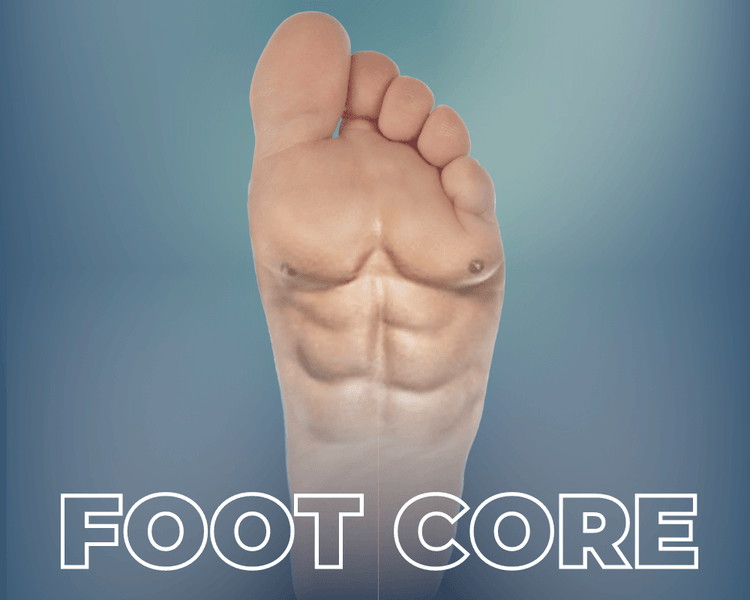
Unlock Your Foot Core - Test Your Balance and Strength
You’ve probably heard of (or tried) doing planks for time as a way to test your core strength and stability. But did you know that your feet have a "core"?You can actually train your foot core to help prevent running-related injuries according to a study by Dr. Sacco.In the new book Born to Run 2: The Ultimate Training Guide, authors Christopher McDougall and Eric Orton place a high priority on what they call “foot core” training. Here’s how you can test your "foot core" strength. ONE-LEGGED BAREFOOT BALANCE TESTBalance on one foot, on your forefoot, on a hard surface with the heel a little elevated so you feel nice and strong at the arch. Use a wall or chair or partner to help you stabilize when needed. Note: This isn’t a calf raise exercise, with up and down movement with the foot. There’s no movement, just stabilizing.Do this for 30–90 seconds per foot, or until you fatigue. 1. Wear Xero Shoes. Walking in minimalist shoes, like Xero Shoes, could be effective for strengthening foot muscles according to Dr. Ridge’s research showing how walking in minimalist shoes built foot strength as much as doing an 8-week foot strengthening exercise program. 2. Improve your balance by using the SlackBlock, a tool that helps build strength in the feet and ankles. It’s a fun challenge, too. Don’t be surprised if you use it all the time.Watch this video to see how to improve balance with the SlackBlock. 3. Keep practicing. One-legged balancing is both a test and a zero-impact exercise that you can do pretty much every day. Time yourself and see if you can beat your previous record.TOOLS TO HELP IMPROVE YOUR "FOOT CORE" SlackBlock BUY HERE Prio BUY HERE Born To Run 2: The Ultimate Training Guide BUY HERE
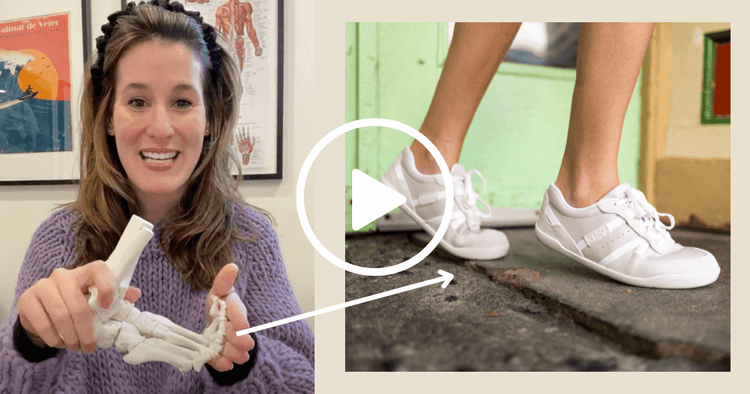
A Podiatrist Explains Why “Every Shoe Is A Walking Shoe”
It’s tempting to treat your shoe rack like a toolbox. For each situation, there’s a product in the $133 billion shoe industry to fit it, from workout shoes to hiking, running, and yes, even walking shoes! But do we need to have a specialized shoe for something as fundamental and human as walking? Massachusetts-based podiatrist Dr. Alissa Kuizinas isn't so sure. “We often have this perception that we need a special category of shoe to wear for walks,” she says. “There’s even a whole segment of footwear called ‘walking shoes,’ and there’s all kinds of technology involved in that. But every shoe can be a walking shoe, as long as it meets certain standards.” It took a long journey for this doctor to reach her current conclusions on walking shoes. Here’s how her personal experience led her to change her mind, and how she guides clients into finding the right shoe for their situation. “I knew there had to be a better solution” Dr. Kuizinas has more than a medical perspective on footwear. She struggled with foot discomfort for years, and found that she was repeatedly jamming her big toe inside her shoes with each step she took – “even with my ‘good shoes’ on,” she recalls. https://youtu.be/D_0iYRwKOaw “Traditional medicine would recommend that I wear custom orthotics, limit my activity and wear stiff-soled shoes until the pain becomes bad enough to require surgery,” she says. “I knew there had to be a better solution.” The deeper this foot doctor delved, the more she found that her feet weren't the problem. It was her shoes! “Even though shoe companies spend millions of dollars on technology and design development, the shoes they produce and sell are doing a major disservice to human feet,” she explains. “From cushioning, to heel-toe drops, stiff soles, to narrow toe boxes, nearly every aspect of a modern shoe has a negative impact on foot movement. It leads to an epidemic of dysfunctional, weak, and malfunctioning feet. And most of us aren’t even aware this is happening!” She finally found her fit once she started wearing anatomically designed, flexible shoes with little to no padding, like Xero Shoes. In a matter of months, she wasn’t just feeling better; she had changed dramatically her perspective on what a shoe should be! Get Out of the Way of Your Feet “The primary purpose of shoes is to protect our feet from the elements and from different surfaces,” Dr. Kuizinas says. “They’re for when we are out in the world walking on a slippery or wet surface. Ultimately, shoes are really there JUST for that purpose. They don’t need to be bulky and restrictive, or supporting our feet. Our feet are designed to support themselves!” So… why not just walk barefoot all the time? Research has actually supported this idea of slight “protection” being beneficial. A study comparing outdoor barefoot walking with minimalist footwear found that the shoes actually improved walking form in both younger and older adults, and reduced risk of falling. To maximize on these benefits, Dr. Kuizinas recommends a ‘as little shoe as possible’ approach to footwear, and instead focusing on building resilient, capable feet. “Rather than building up the shoe to try to externally support the foot and limit motion, minimalist shoes get out of the way of our feet,” she says. “They allow feet to function naturally, to move, and bend. The transition to minimalist shoes involves stripping down the unnecessary and harmful components of modern shoes so that feet can be feet again!” When working with clients today, Dr. Kuizinas shies away from the term “minimalist shoes.” Instead, she likes to call them “functional shoes” or “natural shoes.” “Natural footwear is really on the leading edge of shoe technology,” she says. “By stripping away the unnecessary and downright harmful features of shoes, we allow feet to function effortlessly as they were designed to!” How to Find Your “Functional” Walking Shoe Dr. Kuizinas has a three-point checklist of what she looks for in a functional shoe, which not-so-coincidentally match up with the three major functions of the human foot during walking. “The foot has three jobs: to be a ‘mobile adaptor’ or shock absorber when it first hits the ground, to be a rigid lever during push-off, and to be a sensor of the environment,” she explains. “As long as it can do these three things, it will function well.” Here’s how she says those functions should be reflected in the shoes you wear: Wide Toe Box: “Functional sneakers should have a wide, foot-shaped toe box. They’re broad enough to allow our big toe to sit in a proper alignment.” Flat & Flexible Soles: “Our feet contain 26 bones and 33 joints. And joints are designed to move! A flexible sole allows for natural foot movement. By contrast, stiff and rigid shoes with elevated heels prevent the joints from fully moving through their range of motion and limit the foot.” Minimal cushion and support: “A functional shoe should only be only as cushioned as you really need. Overly cushioned shoes dampen your perception of what's going on with your feet, and your ability to walk well.” If you follow those simple standards, Dr. Kuizinas says, every shoe can be a walking shoe! Be Patient and Build Up to Barefoot Both from her personal experience and in her professional practice, Dr. Kuiz recommends being patient when it comes to transitioning to full-time “functional” footwear. In the early days, she recommended a one-two approach of wearing functional shoes primarily for low-impact activities like walking and running errands, while also going barefoot around the house to help build resilience in the feet and ankles. “As your foot function improves, you’ll be able to tolerate less arch supportive shoes for greater amounts of time,” she explains. Xero Shoes That Fit Dr. Kuizinas' Standards Kelso BUY HERE Prio Suede BUY HERE Aptos BUY HERE Pheonix Leather BUY HERE Hana BUY HERE Mika BUY HERE Need help finding your perfect pair of shoes? TAKE THE SHOE FINDER QUIZ About Dr. Alissa Kuizinas Dr. Alissa Kuizinas is a virtual podiatrist with a passion for natural foot function. She helps people transform their feet by focusing on healthy footwear, movement patterns, and gait mechanics to get them moving at their absolute best.
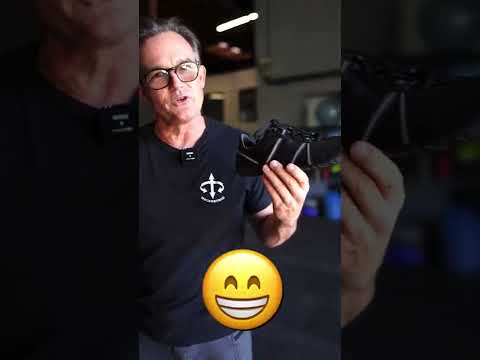
BOSU Ball creator's favorite Xero Shoe?
David Weck, developed the BOSU ball and is all about helping people maximize their health and performance.What shoe does David, and his team at weckmethod.com wear?Check out the video, below, for the answer to that question plus his great (and FAST) advice on how to make the transition from a "normal" shoe to a minimalist, lightweight shoe that lets your feet do what's natural.What can you do in the Speed Force?Well, it looks like almost anything according to this video:
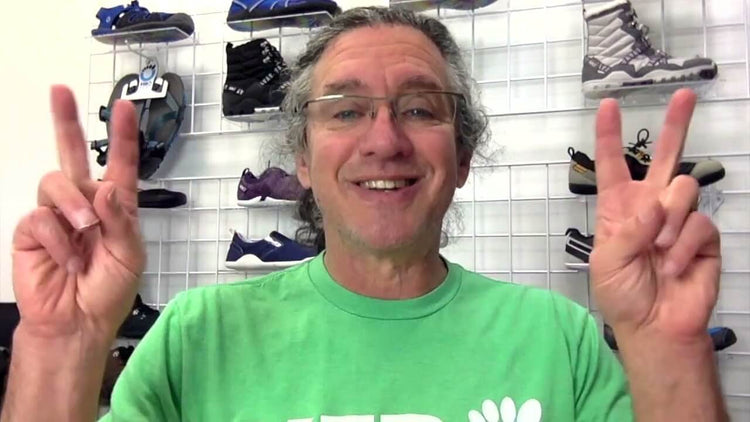
New Research - Minimalist Shoes Improves Balance and Strength in Kids
I've said this before, and I'm going to say it again. It seems silly that in the natural movement and minimalist footwear world we need to prove something as obvious as "use it or lose it." Using your feet means letting them bend, flex, move and feel. "Losing" them means not letting them do those things.So when new research comes out (getting to that in a moment) that's all about use it or lose it, I can’t help but call it, ironically, “stupid research”. Stupid, because, do we really have to prove something as obvious as stupid as use it or lose it?This new research is from the University of Sydney, led by Dr. Shayan Quinlan. It discusses how shoes that allow for natural movement give children stronger feet with better muscle structure, and improve their balance as they grow. We can imagine this would also apply to adults. I have some more to say about the research in this video, below.There’s also an excerpt from an article on the study I think you’ll find particularly interesting…"Based on the study results the researchers recommend parents and carers look for a flexible shoe using the following pointers to identify the difference between available products.– Weight: the lighter the shoe, the better– Flexibility: ensure there is movement when you hold the toe and heel and rotate them in opposite directions and also try folding the shoe in on itself from toe to heel– Structure: the smaller the height difference from the heel to under the ball of the foot the better"While this research wasn't done for Xero Shoes, we can expect this would apply to them as well, since Xero Shoes check these boxes.You can find the study here and the article here, both by the University of Sydney.What’s your take? Comment below.

Run and Walk Better with "Instant Biofeedback"
Why do experts say that if you want to learn to run naturally, or barefoot, you should start on a smooth, hard surface?(Hear Harvard's Dr. Irene Davis talk about this on the podcast she did with Dr. Peter Attia here)The answer: Because that's how you get the most feedback about your form... and feedback leads to change.In short, doing it wrong hurts and your brain figures out how to move your body differently to stop the pain.It just so happens, those gait changes that get rid of running pain lead you to using your muscles, ligaments and tendons as the natural shock absorbers and springs -- better than any cushioned running shoe.Those gait changes lead to what we think of an Natural Movement.But what if you're not a runner?What if you don't want to be barefoot?Well, Xero Shoes wearer and auto technician, Scott Hogan (@greasemonkeyfitness), accidentally discovered a SUPER elegant solution for giving you the feedback your brain needs to adjust to a more natural -- and comfortable -- way of moving.Check it out here:Try out Scott's idea and let me know what you experience in the comments below.
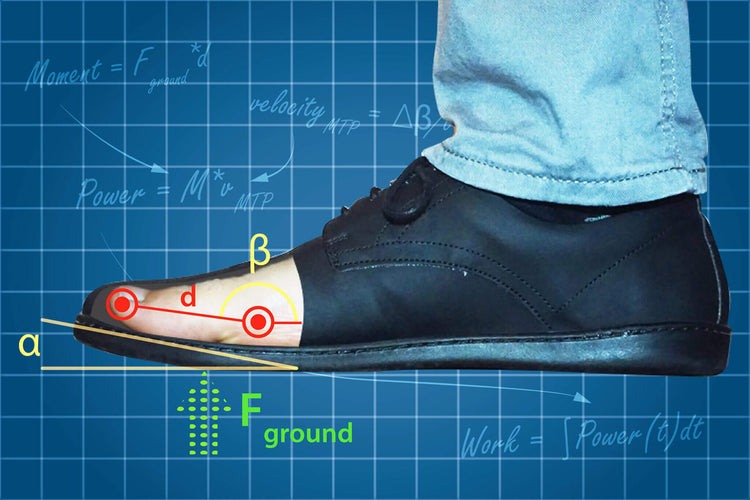
NEW research - Shoes can make you weak and injured
It's time for another episode of "stupid research."Not that the research itself is stupid.But that those of us who understand the value and benefits of natural movement, and how most "normal" shoes get in the way of letting your feet do what's natural, are stunned that people need research to prove something obvious:Using your body naturally is better than restricting it.In this episode, Harvard's Dr. Daniel Lieberman, whose research showing about how barefoot runners put less force through their joints than runners in shoes kicked off the barefoot running boom in 2009, just published a new study about footwear.And the results are not good for "normal" shoes.In this study published in Nature and described on the Harvard website and Lieberman and others examined the effect of "toe spring."Toe spring is the upward curve in a shoe, from the ball of the foot to the tip, that's built into modern athletic shoes and many dress shoes as well.Shoe designers add toe spring to stiff-soled shoes to accommodate the fact that the sole prevents your toes from bending towards your knee as your foot is about to push off the ground.So, what did they discover?In short:By limiting the amount of movement in the foot, the foot gets weaker: “It stands to reason that if the foot muscles have to do less work, then they’re probably going to have less endurance given that many thousands of times a day you push off on your toes,” said Lieberman, the Edwin M. Lerner II Professor of Biological Science and senior author on the paper. The work on toe springs is described in Scientific Reports. The researchers say this potential weakness could make people more susceptible to medical conditions like plantar fasciitis — a common, hard to repair, and painful inflammation of the thick, web-like band of tissue that connects the heel bone to the toes. And this limitation could lead to injuries and medical problems: The researchers say this potential weakness could make people more susceptible to medical conditions like plantar fasciitis — a common, hard to repair, and painful inflammation of the thick, web-like band of tissue that connects the heel bone to the toes. “One of the biggest problems in the world today of people’s feet is plantar fasciitis,” Lieberman said. “We think that what happens is that people are relying on their plantar fascia to do what muscles normally do. When you get weak muscles and the plantar fascia has to do more work, it’s not really evolved for that and so it gets inflamed.”
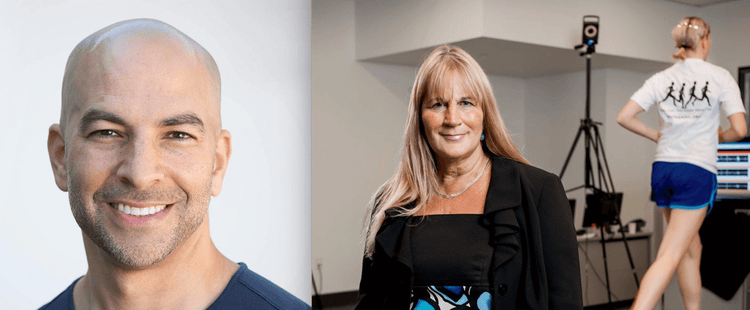
The Science and Research of Minimalist Footwear and Natural Running
"Where's the proof?"I'm asked this question often when I explain the benefits (and FUN) of natural movement, truly minimalist shoes and, whenever possible, barefoot living.Ironically, I never hear people asking that about footwear from "Big Shoe" even though the "modern" athletic shoe is the new kid on the block.It's only been about 50 years since the invention of the padded, motion-controlled, heel-elevated running shoe and there's no evidence that it's helped people reduce injury or even run faster.Well, if you want the proof about both points -- the problems that "normal" shoes have not solved and have probably caused, as well as the value of getting out of those shoes and into something like Xero Shoes, you'll love what I'm about to point you to.And if you know any skeptics -- people who INSIST that humans are better in whatever new form of cushioned shoe that's catching attention, pass this onto them.It's an interview by Dr. Peter Attia and the preeminent minimalist footwear researcher and clinician, Harvard's Dr. Irene Davis.Peter's been a big Xero Shoes fan for quite a while. I introduced him to Irene recently and here's the wonderful result:Click Here to listen to the podcastAnd, once you've listened, let me know what you think in the comments, below.

Do You Need Arch Support? You Don’t. Here’s Why.
This post was recently updated September 26, 2023I know that when I say “There is no support for arch support,” some people respond, “Yeah, but you sell minimalist shoes with no support, so of course you would say that.”To those people I say, “You have the order backwards. I discovered the lack of support for arch support long before starting Xero Shoes.”In fact, it was that discovery – and how getting out of shoes with arch support – changed my life. And now with over 1.5 million people who’ve switched to Xero Shoes, they’ve discovered the same.But, there’s no need to take my word for it.“For years, I thought I needed to buy shoes that were cushioned and had arch support. Foolish me, I found Xero shoes and my life changed. I walk better, I feel better and I feel confident with my balance. Thank you!”Keep reading why you don’t need arch support in shoes. Why You Don’t Need Arch Support - Even if You Think You Do While you may think extra support helps, and it may even feel good, it actually may be causing problems that you didn’t anticipate. Problems that may not be affecting you now, but could in the future.Let me explain by starting with some simple questions. So simple, in fact, you may think I’m joking by even asking them.Here we go:1. Is weaker better than stronger?I’m betting you said No. Okay, so if stronger is better, then think about your biceps and here’s the next question:2. How do you make your biceps stronger?You’re probably thinking about doing curls, or some other sort of exercise, right?In short, USING your arm can make it stronger. Which brings us to the next question:3. How do you make your arm weaker?This is basic “use it or lose it.” Don’t use your arm and it gets weaker.Put your arm in a cast, and 8 weeks later it comes out weak and atrophied.Now let’s apply all of that to your feet.Think about shoes with stiff soles and arch support, or adding orthotics or other inserts.They don’t let your feet move. It’s like putting them in a cast.And while your feet may feel good because your muscles, ligaments and tendons are relaxing… your feet are getting weaker.Research from Katrina Protopapas and others showed that when healthy people added arch support to their shoes, their feet got up to 17% weaker in just 12 weeks.Imagine what that does over time.Here’s a question that’s not simple sounding, and the implications are HUGE for your health and wellbeing:What kind of problems could weak feet lead to?At the very least, it could keep your feet from feeling as good at the end of the day as they did at the beginning. Maybe you can’t do something as simple as walking across your floor in bare feet. Does that really sound “normal”?Or maybe, over time, when you get older, something even worse could happen when you have weak feet that can’t balance. I’m sure you can imagine.How to Solve the Weak Feet ProblemYou already know.Back to our arm analogy – Do you think that, once you get out of the cast, it’s worth spending a couple months doing exercises so you can then use your arm for the rest of your life… or would you rather keep it in a sling and never use it?Of course you do the exercises.You go back to the gym, but use a light weight for maybe one set of 10 reps of a biceps curl.Then, as you get stronger, you SLOWLY add more weight, or more reps, or more sets, based on the feedback from your body.Well, it’s the same thing to make your feet stronger.You could do an exercise program specifically designed to build foot strength.But, even if the program only took minutes a day, and you could do it while watching TV, you might not do it.That’s okay, because there’s a better way.Research from Dr. Sarah Ridge showed that just walking in a “barefoot shoe” builds foot and arch strength as much as doing a foot exercise program.Frankly, walking in bare feet might be best, but that’s not practical for most people, most of the time.Xero Shoes makes casual and performance shoes, boots, and sandals that are all designed to be as close to barefoot as possible, plus the protection you might need, and style you’ll want.You could start slowly, by wearing a pair for 30-60 minutes. And, like going to the gym, add more time when your body tells you you’re ready.There’s no rush.Even if it takes a couple months to build up enough arch strength – so your arches are supporting you – that strength can serve you for the rest of your life.That strength can help you do the things you love – walk, run, hike, play sports, work out, you name it. Or maybe even help you do things you’ve never done before!By the way, Dr. Ridge says that Xero Shoes should give the same benefits of the shoes she used in her study.Here are some Xero Shoes best-sellers.Not sure which shoe is right for you. Take the Shoe Finder Quiz.Want More Proof? More Research about Arch Support?In case you’re still not sure, here’s more RESEARCH that backs up the idea that arch support — whether it’s built into the shoe, or added with an insole or orthotic, isn’t what it’s cracked up to be.And the independent shoe review site, RunRepeat.com, has just posted an article asking the question “Truth or Hype?” when it comes to supporting the arch.The synopsis is in the infographic from their site, below:I take issue with the recommendation that you should only use arch support if a podiatrist recommends it, given that most podiatrists don't know about this research and think, incorrectly, that you DO need arch support.So, I'd rewrite the recommendation to "recommended by a podiatrist who understands natural movement and knows that arch support is a temporary treatment for healing in most cases."By the way, my favorite part of the article on RunRepeat.com is actually the list of Best Rated Running Shoes on the right hand side.As of this writing, here's what that list shows... notice that THREE of the top 5 are Xero Shoes! (and I expect that the Speed Force will crack the Top 5, too):Closing Out: Why You Don’t Need Arch SupportShoes with no arch support allow your feet to move freely and naturally. Instead of relying on external support of shoes with arch, your feet strengthen naturally and become their own support system.Switching to a shoe that does not have arch support can take a bit of time, but your feet will thank you in the long run.


